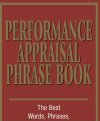sputnam
Elite Member
- Joined
- Apr 24, 2012
- Professional Status
- Certified General Appraiser
- State
- North Carolina
Sorry... but your assumption that the OP a Certified General Appraiser delivered a report that met all requirements is unsupported. He may have and the reviewer missed it. Or he may not have. The fact that someone is Certified General... or an MAI.. or whatever is evidence that they know what they are supposed to do. It is not evidence that they did it. If the OP did in fact include adequate coments in the appraisal report then, the first thing to do is point the reviewer to them. Best way, imo, to do that is to copy and past the relevant comments.. in bold... and resubmit the report. I also like to include something like "As stated on page 3 of the original report.... and then the copied comments".. but that's just me. I don't suffer fools easily.This is exactly the point I am trying to make, the O.P. is a Certified General Appraiser, I am sure that they explained in the report what analysis they used, you do NOT know if the appraiser said something like, 'In ground pool adjusted at $45,000." and neither do I. This what I am trying to relay to you, you even posted it, "the appraiser must summarize the information analyzed" what some of these lender, AMC and Fannie/Freddie, etc. are now asking for a LOT, is NOT "summarize the information analyzed" they want an entire list of which sales were used in a paired sales analysis, a list of ALL of the sales you could have used for your paired sales and an explanation as to WHY you didn't use any of the other possible sales for you adjustment in your sales analysis. THAT'S the problem I have, as again, you ALREADY stated, "the appraiser must summarize the information analyzed and ther reasoning that supports the analyses, opinions, and conclusions." That doesn't mean you are supposed to write an entire novel in you report as you are supposed to "summarize the information analyzed", I already know, as you stated, that it's not the reviewers how to solve the issue and explain what to say, but it IS the reviewers job to understand WHAT kind of appraisal report that THEY are reviewing.
What used to be called Summary Appraisal Report, is now simply called, Appraisal Report, but everything the appraiser is supposed to do is still the same, here is one of the things that is expected in an "Appraisal Report"
"It summarizes the data and analysis used to arrive at the property's value, rather than providing a detailed, in-depth explanation."
What's happening now and one of the reason I will only be doing GSE work for a couple of more years, is that a LOT of entities now want it both ways, they want an "Appraisal Report" that has information of a Narrative Appraisal Report, sorry, but I am not doing that, I always have a VERY detailed work file, with all of my data I used for my adjustments and conclusions.
No one is or has told the OP to write a novel. Most things can be adequately explained in a sentence or two. We do not know what is in the appraisal report. We know that the reviewer didn't think it was enough.
You are incorrect. A Summary Appraisal Report is not now simply called an Appraisal Report. In USPAP, an Appraisal Report may be in any format and can vary greatly in the level of detail that is required. That is determined by the level of detail required by the Client and Intended Users for the Intended Use of the appraisal. An Appraisal Report could be a summary report. It could be a self contained report. It could be a form. It could be a narrative. It could be an oral report. The term 'Summary Appraisal Report' no longer has any meaning in the context of USPAP.

